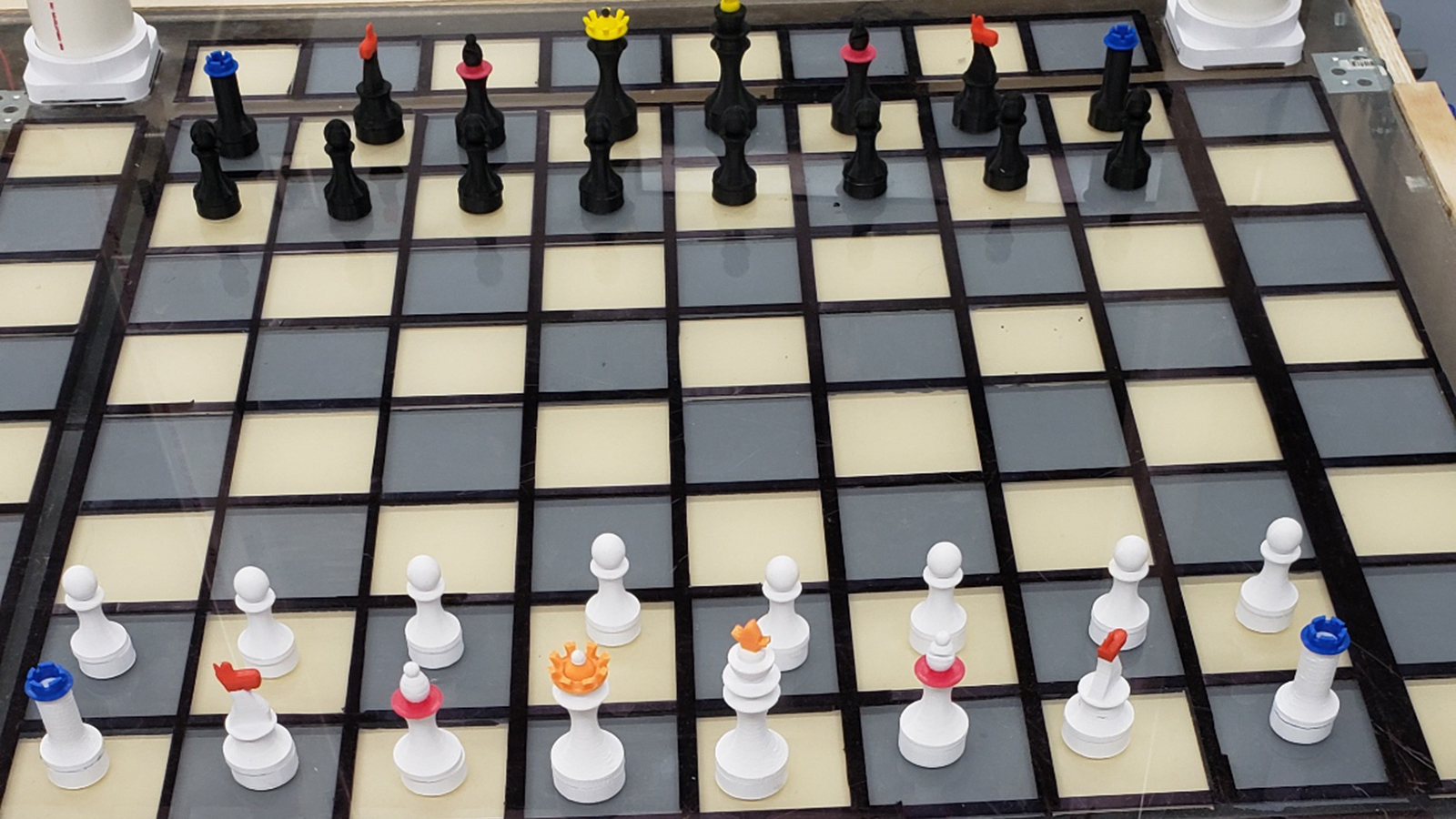King Kobb Plays Chess
Electrical and Computer Engineering
Team Members
Ryan Karl, senior, electrical engineering
Aaron Norlinger, senior, electrical engineering
Zury Vasquez, senior, electrical engineering
Sam Yunker, senior, electrical engineering
Faculty supervisor
Mark Bauer
In this project, a team of electrical engineering capstone students is using machine learning to create a computer that will play a game of chess against a person. Using a Computer Vision model, the human’s move will be found by taking an image of the board. Stockfish, an open-source chess engine, will respond with an opposing move by using a electro-magnet to move the computer’s piece. Once the game is over, all the pieces will be moved back to the starting position.
Ryan Karl discussed the team’s project and the senior design capstone process:
Q: What particular roles do each team member perform?
Karl: I am the Computer Vision tester and GUI creator, Sam is the magnet tester and our chess expert, Aaron is our PCB creator and embedded programmer, and Zury is our carpenter and 3D designer.
Q: How did this team come to be working on this project? Were you assigned by a faculty advisor or did you have to come up with the idea? If the latter, how did you learn about this need/issue/problem?
Karl: Sam saw a small project that moved pieces around on a board. We decided it would do our own version of it.
Q: Describe the work experiences that took you from the beginning (your first moments as a team) to where the project is now.
Karl: The beginning of our project was mostly filled with discussions on different methods of piece detection. The pros and cons of each were discussed in-depth and eventually landed us on computer vision. We decided to use a machine learning-based approach to finding each piece’s location, and to help out with this we decided to color our pieces. It gives each piece a unique look while functionally differentiating each to the camera.
Q: How will your device have an impact on people or the world?
Karl: This could be placed in a senior living center. Its large shape and auto-correcting features can help with placing pieces. It also has the functionality to play online making it easier to play with friends and family across the globe
Q: How has working on this project affected you and your decisions about the pathways you will take in engineering?
Karl: After working on this project, Ryan is starting work on a master’s in electrical engineering, specializing in computer vision.
